
Joseph Charles Arthur was a pioneer American plant pathologist and mycologist best known for his work with the parasitic rust fungi (Pucciniales). He was a charter member of the Botanical Society of America, the Mycological Society of America, and the American Phytopathological Society. He was a recipient of the first Doctorate in Sciences awarded by Cornell University. The standard author abbreviation Arthur is used to indicate this person as the author when citing a botanical name.

Wheat leaf rust is a fungal disease that affects wheat, barley and rye stems, leaves and grains. In temperate zones it is destructive on winter wheat because the pathogen overwinters. Infections can lead up to 20% yield loss, which is exacerbated by dying leaves, which fertilize the fungus. The pathogen is Puccinia rust fungus. Puccinia graminis causes "stem or black rust", P. triticina causes "leaf or brown rust", and P. striiformis causes "strip or yellow rust". It is the most prevalent of all the wheat rust diseases, occurring in most wheat growing regions. It causes serious epidemics in North America, Mexico and South America and is a devastating seasonal disease in India. All three types of Puccinia are heteroecious requiring two distinct and distantly related hosts. Rust and the similar smut are members of the class Pucciniomycetes but rust is not normally a black powdery mass.
Sir Edwin John Butler FRS was an Irish mycologist and plant pathologist. He became the Imperial Mycologist in India and later the first director of the Imperial Bureau of Mycology in England. He was knighted in 1939.. During his twenty years in India, he began large scale surveys on fungi and plant pathology and published the landmark book Fungi and Disease in Plants: An Introduction to the Diseases of Field and Plantation Crops, especially those of India and the East (1918) and has been called the Father of Mycology and Plant Pathology in India.
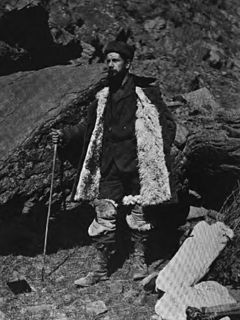
Frank Nicholas Meyer was a United States Department of Agriculture explorer who traveled to Asia to collect new plant species.. The Meyer lemon was named in his honor.
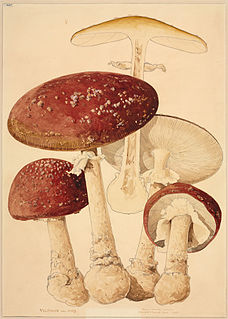
Worthington George Smith was an English cartoonist and illustrator, archaeologist, plant pathologist, and mycologist.
George Edward Massee was an English mycologist, plant pathologist, and botanist.
Richard William George Dennis, Ph.D., was an English mycologist and plant pathologist.

James Bolton was an English naturalist, botanist, mycologist, and illustrator.
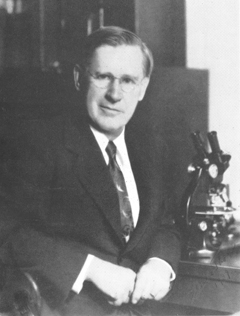
Charles Thom was an American microbiologist and mycologist. Born and raised in Illinois, he received his PhD from the University of Missouri, the first such degree awarded by that institution. He was best known for his work on the microbiology of dairy products and soil fungi, and in particular his research into the genera Aspergillus and Penicillium. His work influenced the establishment of standards for food handling and processing in the USA. He pioneered the use of culture media to grow microorganisms, and, with food chemist James N. Currie, developed a process to mass-produce citric acid using Aspergillus. Thom played an important role in the development of penicillin in World War II.

Flora Wambaugh Patterson (1847–1928) was an American mycologist, and the first female plant pathologist hired by the United States Department of Agriculture. She ran the US National Fungus Collections for almost thirty years, radically growing the collection and shaping its direction, and supervised or discovered numerous significant fungal diseases.
Louis Charles Christopher Krieger was an American mycologist and botanical illustrator who was considered the finest painter of North American fungi.
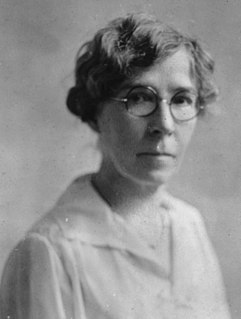
Vera Katherine Charles (1877–1954) was an American mycologist. She was one of the first women to be appointed to professional positions within the U.S. Department of Agriculture. Charles coauthored several articles on mushrooms while working for the USDA.
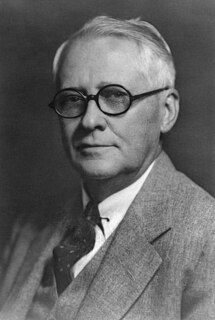
Herbert Hice Whetzel was an American plant pathologist and mycologist. As a Professor of Plant Pathology, he led the first department of Plant Pathology at an American university, and founded the Cornell Plant Pathology Herbarium (CUP).
Anna Eliza Jenkins was an American mycologist. She specialized in phytopathology, particularly the fungi responsible for "spot anthracnoses", including Sphaceloma and Elsinoe.
Frank Lamson-Scribner was an American botanist and pioneering plant pathologist. He was the first United States Department of Agriculture scientist hired to study plant disease in economic plants and first USDA agrostologist.

The U.S. Department of Agriculture's Pomological Watercolor Collection is an archive of some 7,500 botanical watercolors created for the USDA between the years 1886 and 1942 by around five dozen artists. Housed by the United States National Agricultural Library, it is a unique resource documenting existing fruit and nut cultivars, new introductions, and specimens discovered by USDA's plant explorers, representing 38 plant families in all. It has been called "one of the world's most unusual holdings of late 19th and early 20th century American botanical illustrations".
Edith Katherine Cash was an American mycologist and lichenologist.
Arthur Bliss Seymour was an American botanist and mycologist who specialized in parasitic fungi.
Effie Almira Southworth Spalding (1860–1947), was an American botanist and mycologist, and the first woman plant pathologist hired by the United States Department of Agriculture (USDA). Her most important discovery was the 1887 identification of the fungus Colletotrichum gossypii as the cause of cotton cankers, a disease which killed thousands of acres of cotton and was a major economic threat. She taught botany at several institutions, worked at the Desert Botanical Laboratory with her husband, and established the Botany Department Herbarium at the University of Southern California.
Kenneth A. Harrison was a Canadian mycologist. He was for many years a plant pathologist at what is now the Atlantic Food and Horticulture Research Centre in Nova Scotia. After retirement, he contributed to the taxonomy of the Agaricomycotina, particularly the tooth fungi of the families Hydnaceae and Bankeraceae, in which he described several new species.